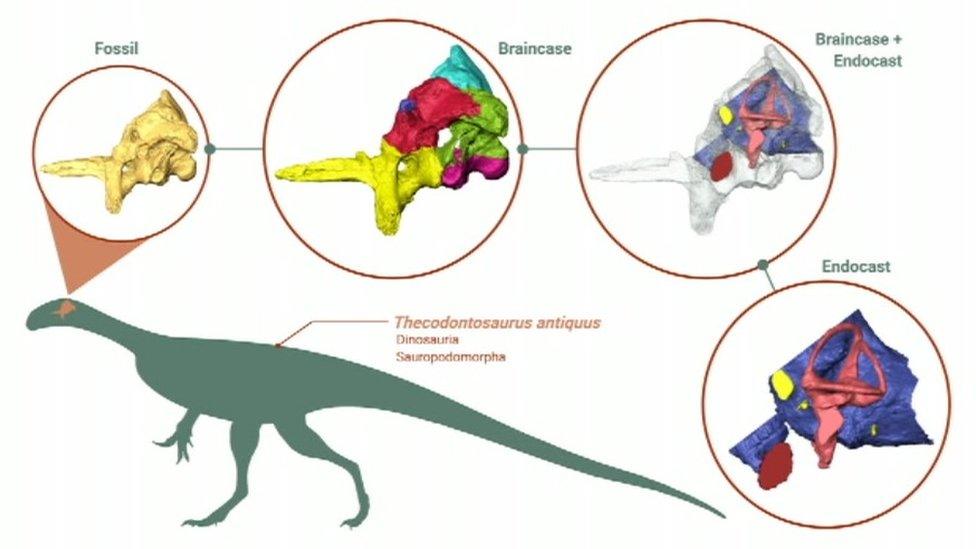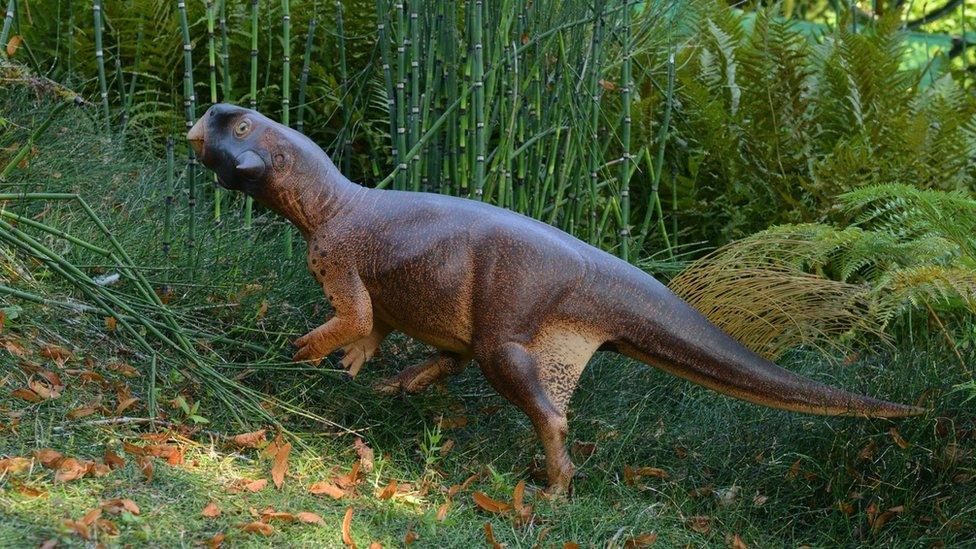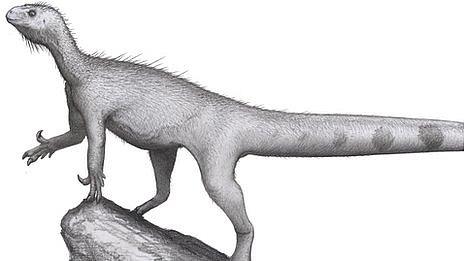Bristol dinosaur's brain digitally rebuilt by scientists
- Published

The first thecodontosaurus, known as the Bristol Dinosaur, was discovered near what is now Bristol Zoo in 1834
A dinosaur's brain has been digitally rebuilt revealing what scientists called a "surprising" insight into the creature's agility and eating habits.
Scientists from Bristol University used advanced imaging and 3-D modelling techniques to digitally rebuild the brain of Thecodontosaurus.
They found the creature, better known as the Bristol dinosaur due to it being discovered in the city, may have eaten meat unlike its plant-eating relatives.
It also may have walked on two legs.
Paleontologist Antonio Ballell said: "Our analysis of Thecodontosaurus' brain uncovered many fascinating features, some of which were quite surprising.
"Whereas its later relatives moved around ponderously on all fours, our findings suggest this species may have walked on two legs and been occasionally carnivorous."
Thecodontosaurus lived in the late Triassic age about 205 million years ago and was the size of a large dog.
'Beautifully preserved'
Although its fossils were discovered near what is now Bristol Zoo in 1834, scientists have only recently been able to deploy imaging software to extract new information without destroying them.
Three-dimensional models were generated from CT scans by digitally extracting the bone from the rock, identifying anatomical details about its brain and inner ear previously unseen in the fossil.
"Even though the actual brain is long gone, the software allows us to recreate brain and inner ear shape via the dimensions of the cavities left behind," Mr Ballell explained.
"The braincase of Thecodontosaurus is beautifully preserved so we compared it to other dinosaurs, identifying common features and some that are specific to Thecodontosaurus.
"Its brain cast even showed the detail of the floccular lobes, located at the back of the brain, which are important for balance.
"Their large size indicate it was bipedal. This structure is also associated with the control of balance and eye and neck movements, suggesting Thecodontosaurus was relatively agile and could keep a stable gaze while moving fast."
Related topics
- Published15 September 2016

- Published1 October 2013
